1. peripheral decarboxilase inhibitors
1.1. e.g. carbidopa
2. Step1
2.1. difficult words
2.1.1. with suffle
2.1.2. clumsy:moving and doing things in careless way
2.1.3. clenching
2.2. cues
2.2.1. 1- retied soldier
2.2.2. 2- he skipped a dental examiation
2.2.3. 3- 69yo
2.2.4. 4- posterior teeth discomfort in the last 6months .
2.2.5. 5- is appearant ige is considered more than the actual age.
2.2.6. 7- slowing down
2.2.7. 8- seems clumsy
2.2.8. 9- wooden face
2.2.9. 10-clenching his teeth is a habit for long time
2.2.10. 11recent deterioration in his oral hygen
2.2.11. 12-complain his face is stiff
2.2.12. symptos
2.2.12.1. 6-walking with a shuffle
3. Step2: problem formulation
3.1. 69yo retired soldier, whose appearant age seems older than his actual age, was refferd from a dentist to seek medical care for many changes including posterior teeth discomfort. shuffling gate was noticed and he is clumsy. wooden face with a habit of clenching his teeth.
4. Step3: Hypothesis generation
4.1. by Yousef
4.1.1. movement disorder related to age
4.1.2. muscle regidity
4.1.2.1. more release of ACH
4.2. by R. alsulamy
4.2.1. problem related to damage for
4.2.1.1. substantia nigra
4.2.1.2. Red nucleus
4.2.1.3. pyramidal and extrapyramidal tract
4.3. by Homoud
4.3.1. might be a prolem affecting
4.3.1.1. basal ganglion
4.3.1.1.1. activated(direct) or inactivated(indirect) by Dopamin
4.3.1.2. cerebellum
4.4. by Hassan
4.4.1. basal ganglia and substantia nigra are affecting the coordination
4.5. by Essam
4.5.1. movement disorder
4.5.1.1. mainly parkinson's
4.5.2. by Faris
4.5.2.1. infections or environmantal factors may lead to this pesentation
4.5.2.1.1. mercury disolvment
4.6. By kashi
4.6.1. neurological problem
4.6.2. generalized musculer problem
4.6.3. central problem
4.7. by Adeeb
4.7.1. more investigation to find the diagnosis
5. Step4: Hypothesis organization
5.1. parkinsonism
5.2. Huntington
5.3. metallosis
6. Step5: Learning Objectives
6.1. To know about parkinsonism and huntington disease
6.1.1. define
6.1.2. sign&symptoms
6.1.3. pathophysiology
6.1.4. causes
6.1.5. investigations
7. Step6: Review
7.1. Parkinsonism
7.1.1. cardinal manifestation
7.1.1.1. TREMOR
7.1.1.2. RIGIDITY
7.1.1.2.1. shuffling gait
7.1.1.2.2. mask face
7.1.1.3. BRADYKINESIA
7.1.1.4. POSTURAL INSTABILITY
7.1.2. MANIFESTATION
7.1.2.1. motor symptoms
7.1.2.1.1. shuffling gait
7.1.2.1.2. resting tremor
7.1.2.1.3. craniofacial
7.1.2.1.4. visual
7.1.2.1.5. MSK
7.1.2.1.6. gait
7.1.2.2. non motor symptoms
7.1.2.2.1. depression
7.1.2.2.2. anxiety
7.1.2.2.3. anosmia
7.1.3. pathophysiology
7.1.3.1. neurodegeneration
7.1.3.2. accumolation of body fluid
7.1.3.3. nigrostriatal pathway. is affected
7.1.3.3.1. indirect pathway predominate on the direct pathway
7.1.3.4. lewy bodies
7.1.3.4.1. accumolate in the olfactory tract first
7.1.3.5. genetics
7.1.3.5.1. park1
7.1.3.5.2. park2
7.1.3.5.3. park5
7.1.3.5.4. park8
7.1.3.6. ubiquitin
7.1.3.6.1. not degradation for misfolded
7.1.3.7. dopamine depletion
7.1.4. epidemiology
7.1.4.1. 12000/100000
7.1.4.2. over 60
7.1.4.2.1. 1%
7.1.5. causes
7.1.5.1. idiopathic
7.1.5.2. secondary causes
7.1.5.2.1. mptp
7.1.5.2.2. heroin
7.1.5.2.3. anti psychotic drugs
7.1.5.2.4. trauma
7.1.6. diagnosis
7.2. Huntington's disease
7.2.1. define
7.2.1.1. autosomal dominant
7.2.1.2. neurodegenerative disease
7.2.1.3. affect the indirect way
7.2.1.4. progressive
7.2.1.5. disease of adult hood
7.2.2. pathology
7.2.2.1. head of caudate nucleus affected
7.2.3. complications
7.2.3.1. psychological effect
7.2.4. sign and symptoms
7.2.4.1. chorea
7.2.4.1.1. disappear late in the disease
7.2.4.2. dementia
7.2.4.3. late appearing
7.2.4.3.1. dystonia
7.2.4.3.2. myoclonus
7.2.5. life expectency is around 15yo
7.2.6. investigations
7.2.6.1. having family history
7.2.6.2. genetic testing
7.2.6.2.1. 4q22
7.2.6.3. imaging
7.2.6.3.1. MRI
8. Step7: Inquiry plan
8.1. HISTORY
8.1.1. 69yo
8.1.2. suburban
8.2. PHYSICAL EXAMINATION
8.3. INVESTIGATION
9. Step8: Diagnostic decision
10. Step9:review
11. Step10: management
11.1. symptomatic treatment
11.1.1. the gold standard
11.1.1.1. carbidopa/levodopa
11.1.1.1.1. 25/100
11.1.1.1.2. used
11.1.1.1.3. givien in an empty stomach
11.1.1.1.4. freezing phenomonon
11.1.1.1.5. can't be used for long time
11.1.2. start with non-dopamenergic drugs
11.1.2.1. anticholinergic drugs.
11.1.3. dopamin agonist
11.1.3.1. ergot derivatives
11.1.3.1.1. valvulopathies
11.1.3.2. non-ergot derivatives
11.1.4. MAO inhibitors
11.1.4.1. high possibility of hallucination when used with levodopa
11.1.5. COMT inhibitors
11.1.5.1. entacapone
11.1.5.1.1. act peripherally
11.1.5.1.2. tolacapone
11.1.6. non-motor symptoms
11.1.6.1. to prevent hallucination
11.1.6.2. dementia
11.1.6.2.1. anticholinestrase inhibitors
11.1.6.3. seboric dermatitis
11.1.6.3.1. steroid cream
11.1.6.4. urinary urgency
11.1.6.4.1. oxybutinin
11.1.6.5. constipation
11.1.6.5.1. fluid intake
11.1.6.5.2. exercise
11.1.6.6. GI problem
11.1.6.6.1. domperidone
11.1.6.7. sailorrhea
11.1.6.7.1. oral anticholinergic
11.1.6.8. sexual dysfunction
11.1.6.8.1. either stopping the medications
11.1.6.8.2. sildenafil
11.1.6.9. orthostatic hypotenstion
11.1.6.9.1. stopping antihypertensive drugs
11.1.6.9.2. domaperidone
11.1.6.10. pain
11.1.6.10.1. gapapentin
11.1.6.11. sleep disturbances
11.1.6.12. PSYCHOSIS
11.1.6.12.1. antipsychotic drugs
11.2. non-pharmacological treatment
11.2.1. cognitive behavioral therapy
11.2.1.1. reduce anxiety
11.2.2. surgical therapy
11.2.2.1. transplanted SN
11.2.2.2. pallidetomy
11.2.2.3. thalmotomy
11.2.2.4. subthalatomy
11.2.2.5. D B S
11.2.3. exercise
11.2.4. patient education
11.2.5. social support
11.2.6. canes and walkers
11.2.7. occupational therapy
